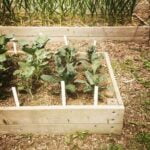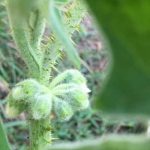Are you interested in starting a vegetable gardening project in Austin, Texas? Joining the thriving gardening scene in the area can be a rewarding experience, given the local climate and soil conditions that are conducive to successful vegetable gardening.
From sourcing seeds and seedlings to managing pests and diseases, this introductory section will provide you with essential information to kickstart your own garden. Whether you are an experienced gardener or a beginner looking for tips on how to grow your own produce, this article will guide you through every step of the process.
Austin’s unique climate and soil create an ideal environment for growing a variety of vegetables. With proper planning and care, you can enjoy a bountiful harvest throughout the year. In this article, we will explore the best vegetables to grow in Austin, TX and provide valuable tips for selecting the most suitable varieties based on the local growing conditions.
In addition to choosing the right vegetables, preparing the soil is crucial for successful vegetable gardening. We will take you through a step-by-step guide for preparing the soil in Austin, TX, along with recommendations for organic soil amendments and fertilizers suitable for the local soil. By following these guidelines, you can create an environment that promotes healthy plant growth and abundant yields.
Best Vegetables to Grow in Austin, TX
When it comes to vegetable gardening in Austin, TX, the local climate and soil conditions play a significant role in determining which vegetables are best suited for successful growth. The warm and sunny climate of Austin makes it ideal for growing a wide variety of vegetables throughout the year. Additionally, the well-draining and fertile soil in the region provides an excellent foundation for cultivating different types of vegetables.
One of the best vegetables to grow in Austin, TX is tomatoes. With ample sunlight and warmth, tomatoes thrive in this climate. Other vegetables that do well include peppers, squash, cucumbers, and okra. These heat-loving vegetables not only tolerate the hot temperatures but also produce bountiful harvests when properly cared for. Leafy greens such as lettuce, spinach, and kale also flourish during cooler months, making them excellent choices for winter gardens.
When selecting vegetables for your garden in Austin, TX, it’s important to consider the local growing conditions. Look for varieties that are specifically recommended for hot climates with a long growing season.
Choosing heat-tolerant and disease-resistant varieties can significantly increase your chances of success in vegetable gardening in Austin. Additionally, considering the potential pest threats in the area can help you select vegetables that are less susceptible to common pests in Austin, TX such as aphids or whiteflies.
Preparing the Soil for Vegetable Gardening
Vegetable gardening in Austin, TX is a popular and rewarding activity, thanks to the favorable climate and soil conditions in the area. With mild winters and hot summers, Austin provides an extended growing season for a wide variety of vegetables. The key to successful vegetable gardening in Austin lies in preparing the soil properly to ensure that plants have access to essential nutrients and water.
One of the first steps in preparing the soil for vegetable gardening in Austin, TX is to perform a soil test. This will help determine the pH level and nutrient content of the soil, allowing gardeners to make informed decisions about which organic soil amendments and fertilizers are needed to create optimal growing conditions for vegetables. Commonly used organic soil amendments in Austin include compost, aged manure, and green sand to improve soil structure and fertility.
In addition to adding organic matter and nutrients to the soil, it is important to ensure proper drainage for vegetable gardens in Austin, TX. Raised beds can be a great option for areas with heavy clay soils or poor drainage, allowing gardeners to have more control over the quality of their growing medium. By following these steps, gardeners can create healthy and productive vegetable gardens that thrive in the unique climate and soil conditions of Austin, TX.
| Soil Preparation Tips | Recommendations |
|---|---|
| Perform a Soil Test | Determine pH levels and nutrient content |
| Add Organic Matter | Compost, aged manure, green sand |
| Ensure Proper Drainage | Consider raised beds for better control over growing medium |
Sourcing Seeds and Seedlings
When it comes to vegetable gardening in Austin, TX, one of the most important steps is sourcing high-quality seeds and seedlings. Whether you’re a seasoned gardener or just starting out, choosing the right varieties for the local climate and soil conditions is crucial for a successful harvest. Fortunately, Austin offers a range of options for finding the perfect seeds and seedlings to kickstart your garden.
Here are some of the best places to source seeds and seedlings in Austin, TX:
- Local nurseries: Visit some of the many nurseries around Austin that offer a wide variety of vegetable seeds and seedlings. Some well-known nurseries include The Great Outdoors Nursery, Barton Springs Nursery, and Shoal Creek Nursery.
- Farmers’ markets: Support local farmers and discover unique vegetable varieties by visiting farmers’ markets in the Austin area. Many vendors sell heirloom and organic seeds that are well-suited to the local growing conditions.
- Seed exchanges: Joining a local gardening club or community garden can provide access to seed exchange programs where members can trade or share their favorite seeds and seedlings with one another.
When selecting seeds and seedlings for your vegetable garden in Austin, TX, consider factors such as heat tolerance, disease resistance, and water requirements. It’s also important to choose varieties that have been specifically adapted to thrive in Central Texas’ unique climate.
By taking the time to carefully select your seeds and seedlings, you’ll be setting yourself up for a bountiful harvest that’s perfectly suited to vegetable gardening in Austin, TX. Happy planting.
Seasonal Planting Guide
Best Planting Times
In Austin, TX, the climate is characterized by hot summers and mild winters, making it conducive for growing a wide variety of vegetables throughout the year. The best planting times for different vegetable crops in Austin, TX typically align with the spring and fall seasons.
Cool-season crops such as lettuce, kale, carrots, and broccoli thrive when planted in late summer or early fall for a harvest in late fall and winter. On the other hand, warm-season crops like tomatoes, peppers, squash, and beans are best planted in early spring after the last frost for a bountiful summer harvest.
Succession Planting
To maximize space and ensure a continuous harvest throughout the growing season, gardeners in Austin, TX can utilize succession planting techniques. This involves sowing small batches of seeds or transplanting seedlings at regular intervals rather than all at once. By staggering plantings every few weeks, gardeners can enjoy a steady supply of fresh produce instead of an overwhelming abundance all at once.
Extending the Growing Season
In order to extend the growing season for certain vegetable crops in Austin, TX, gardeners can utilize various techniques such as using row covers or cloches to protect plants from early frosts in the fall. Additionally, utilizing cold frames or hoop houses can provide additional warmth and protection during the cooler months of the year. These methods allow avid vegetable gardeners to continue growing their favorite crops well into late fall or even winter.
By understanding the unique planting times and strategies for extending the growing season in Austin, TX, vegetable gardeners can make the most of their gardening endeavors throughout the entire year.
Pest and Disease Management
When it comes to vegetable gardening in Austin, TX, one of the key challenges that gardeners face is managing pests and diseases that can affect their crops. Fortunately, there are organic methods that can be employed to control pests and prevent diseases without resorting to harsh chemical pesticides.
Here are some common pests and diseases that you are likely to encounter in your vegetable garden in Austin, TX:
– Aphids: These tiny insects can quickly multiply and infest plants, sucking the sap from the leaves and causing them to wilt and die.
– Early Blight: This fungal disease affects tomato plants, causing dark spots on the leaves and eventually leading to defoliation if left untreated.
– Squash Bugs: These pests can wreak havoc on squash and pumpkin plants, piercing the stems and sucking out the sap, which can cause wilting and stunted growth.
To combat these pests and diseases in your vegetable garden, consider implementing the following organic pest management techniques:
1. Companion planting: Some plants have natural pest-repellent properties. For example, planting marigolds among your vegetables can help deter aphids and other pests.
2. Neem oil spray: Neem oil is a natural insecticide that can be effective against aphids, squash bugs, and other common garden pests.
3. Crop rotation: Rotating your crops each season can help disrupt the life cycle of pests and reduce disease pressure in the soil.
By being vigilant about pest and disease management in your vegetable garden in Austin, TX, you can help ensure a bountiful harvest of healthy, delicious produce.
Watering and Irrigation
Proper Watering Techniques
When it comes to vegetable gardening in Austin, TX, proper watering is crucial for the success of your crops. The local climate tends to be hot and dry, especially during the summer months, so it’s important to pay attention to the water needs of your plants. One of the best practices for watering vegetables in Austin is to water deeply and infrequently. This encourages the plants to develop deep root systems, making them more resilient during periods of drought.
It’s also important to water in the early morning or late afternoon to reduce evaporation and ensure that the water has a chance to penetrate the soil before evaporating. Drip irrigation systems are highly recommended for vegetable gardens in Austin, as they deliver water directly to the base of the plants, minimizing waste and reducing the risk of fungal diseases caused by overhead watering.
Conserving Water
In a city like Austin where water conservation is a top priority, vegetable gardeners can take steps to reduce their water usage while still producing bountiful harvests. One effective method is mulching, which helps retain soil moisture and reduces evaporation. Organic materials such as straw, wood chips, or compost can be used as mulch around vegetable plants.
Another way to conserve water in your vegetable garden is by using rainwater harvesting systems. Collecting rainwater in barrels or cisterns allows you to use natural precipitation to irrigate your garden, reducing reliance on municipal water sources.
Importance of Proper Irrigation
Proper irrigation not only ensures healthy and productive vegetable plants but also contributes to sustainable gardening practices in Austin, TX. By using efficient irrigation methods and being mindful of water conservation techniques, vegetable gardeners can do their part in preserving this valuable resource while enjoying a thriving garden. In a climate like Austin’s where temperatures can soar during summer months ,the ability ableto provide consistent moisture levels is vital for successful vegetable gardening endeavorsvegetable gardening austin tx.
Community Resources and Events
In conclusion, vegetable gardening in Austin, TX offers a wealth of opportunities for both experienced and aspiring gardeners. The local climate and soil conditions create an ideal environment for cultivating a wide variety of vegetables, making it possible for gardeners to enjoy an abundant harvest throughout the growing season. With the right knowledge and resources, individuals can successfully grow their own produce, contributing to a sustainable and healthy lifestyle.
One of the keys to successful vegetable gardening in Austin, TX is taking advantage of community resources and events. Local gardening clubs provide valuable support and knowledge-sharing opportunities, while farmers‘ markets offer access to high-quality seeds and seedlings. Additionally, attending workshops and classes related to vegetable gardening can help gardeners stay updated on the best practices for maintaining healthy and productive crops.
As the interest in vegetable gardening continues to grow in Austin, TX, it is important for gardeners to stay connected with their local community. Participating in events such as seed swaps or plant sales can not only provide access to new varieties of plants but also foster a sense of camaraderie among fellow gardeners.
By staying involved in these community resources and events, individuals can continue to expand their knowledge and skills while connecting with like-minded individuals who share their passion for vegetable gardening in Austin, TX.
Frequently Asked Questions
What Fruits and Vegetables Grow Well in Austin TX?
Fruits and vegetables that grow well in Austin, TX include tomatoes, peppers, squash, melons, and citrus fruits like oranges and grapefruits. Leafy greens such as lettuce and spinach also flourish in the Austin climate.
When Should I Plant My Garden in Austin?
In Austin, it’s best to plant your garden in early spring for most fruits and vegetables. This generally means planting around late February to early March when the risk of frost has passed. Some crops may be able to be planted as early as mid-February or as late as April.
When Should I Start a Vegetable Garden in Texas?
The best time to start a vegetable garden in Texas is typically in late winter or early spring. This allows for ideal growing conditions for many vegetable crops before the heat of summer sets in. By starting the garden during these times, you can take advantage of a longer growing season for your vegetables.

If you’re looking to get into vegetable gardening, or are just looking for some tips on how to make your current garden better, then you’ve come to the right place! My name is Ethel and I have been gardening for years. In this blog, I’m going to share with you some of my best tips on how to create a successful vegetable garden.





